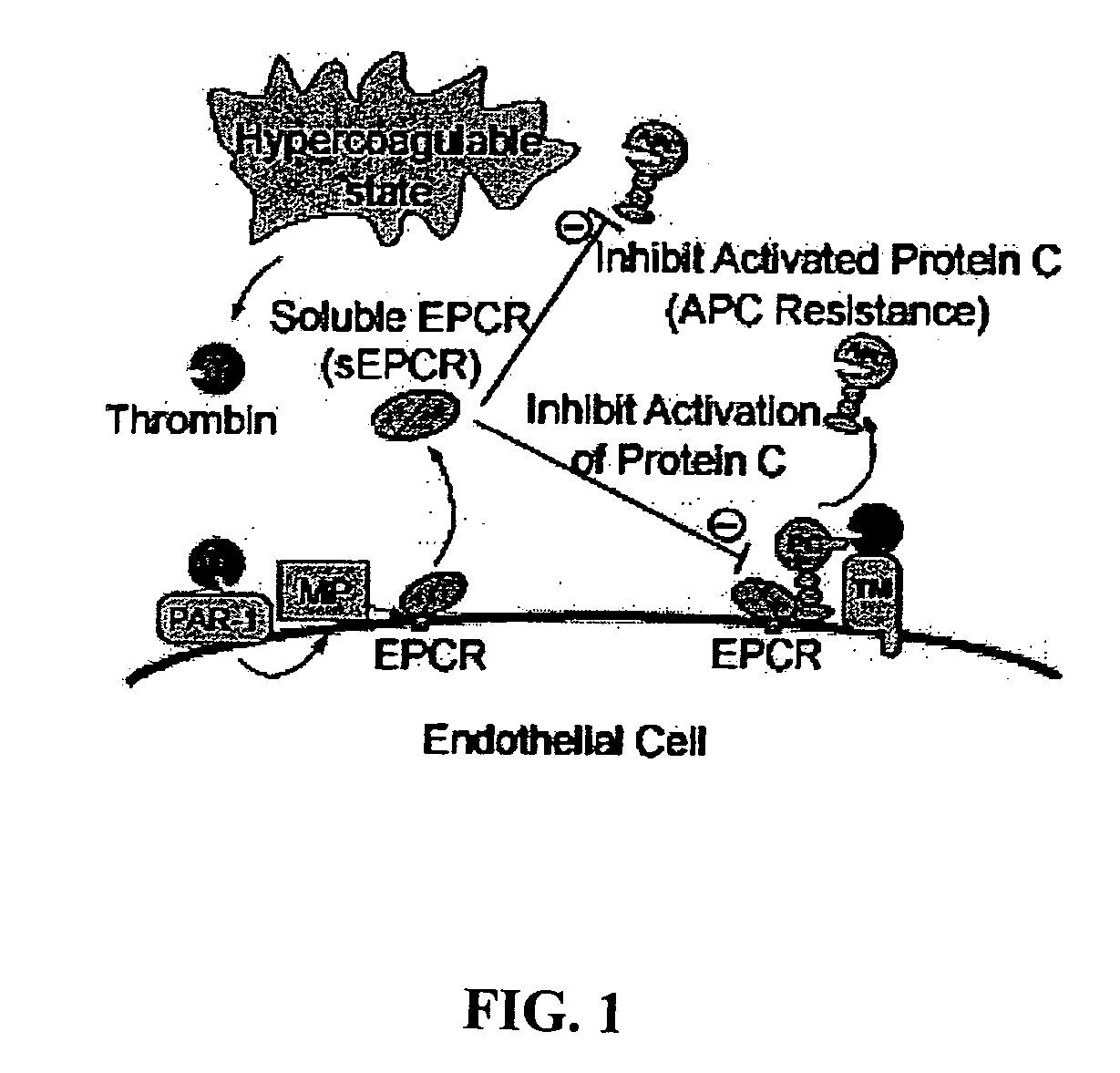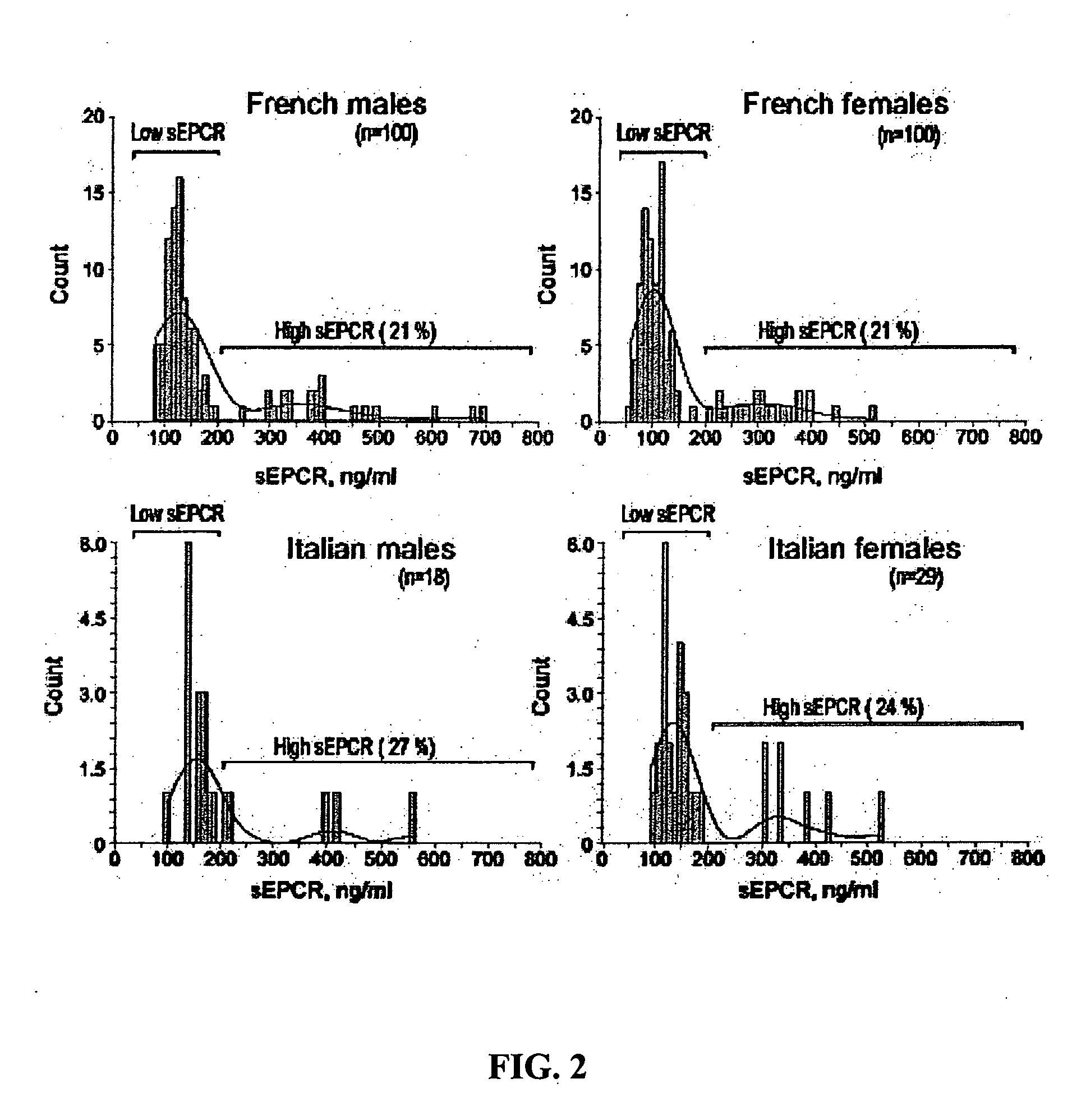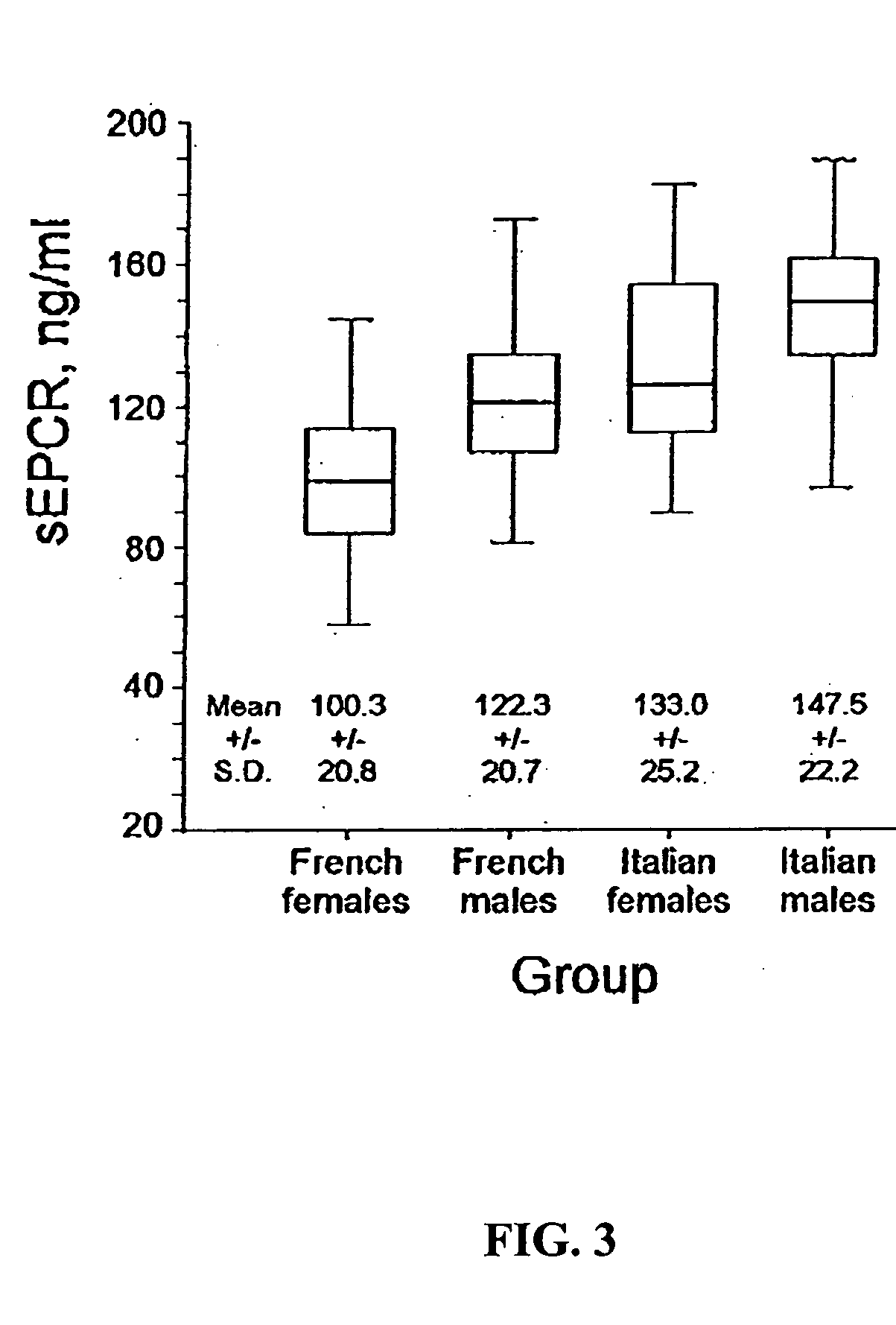Methods for predicting susceptibility to cardiovascular disease
a cardiovascular disease and susceptibility technology, applied in the field of cardiovascular disease susceptibility prediction methods, can solve the problems of limiting the efficiency of the protein c pathway, losing the ability to create clots, and relatively few markers available to practicing physicians
- Summary
- Abstract
- Description
- Claims
- Application Information
AI Technical Summary
Benefits of technology
Problems solved by technology
Method used
Image
Examples
example 1
The Distribution of sEPCR Levels in Healthy Adults is Skewed and Significantly Different from a Normal Distribution
The distribution of sEPCR levels in healthy adults was evaluated using plasma samples from healthy adult populations obtained from collaborators in France and Italy. All samples in this and consecutive studies were collected with informed consent using IRB-approved protocols. sEPCR levels were measured by a monoclonal antibody-based ELISA (Stearns-Kurosawa et al., 2002) adapted from a prior method (Kurosawa et al., 1998). Samples were grouped by gender and nationality (Italian males, Italian females, French males and French females). sEPCR values in these four gender by nationality groups were tested for normality using the Shapiro-Wilk test. Since all showed significant departure from normality, the Kruskal-Wallis test was used to examine differences among the four populations. Since histograms suggested subpopulations within each group, each group was partitioned in...
example 2
sEPCR Levels are Increased in Patients with Systemic Inflammatory Diseases and do not Correlate with Soluble Thrombomodulin (sTM) Levels
Previously, the inventors showed that sEPCR levels are elevated in patients with sepsis or systemic lupus erythematosus (SLE) (Kurosawa et al., 1998). Both are systemic diseases with prominent coagulopathic and inflammatory components. SLE in particular promotes premature coronary atherosclerosis and cerebrovascular disease, and SLE patients experience a greatly increased risk of coronary events compared to age and sex matched controls (Urowitz et al., 1976; Petri, 2000). The septic patients required hemodynamic support, had ATIII levels less than 70%, no previous liver disease and no hematologic disease. In both patient populations, sEPCR levels were significantly increased (FIG. 6). They did not observe a correlation between the sEPCR levels and multiple organ failure score, survival or presence of septic shock. Surprisingly, parallel measuremen...
example 3
sEPCR Levels are Linked to Thrombin Production in Vivo
Earlier in vitro studies indicated that generation of sEPCR is regulated by inflammatory mediators (Gu et al., 2000), including thrombin-mediated up-regulation of surface metalloproteolytic activity (Xu et al., 2000). Therefore, the inventors addressed the question of whether plasma sEPCR levels reflect changes in thrombin levels in vivo (Stearns-Kurosawa et al., 2002). They found that sEPCR levels were reduced significantly in French patients undergoing oral anticoagulant therapy with vitamin K antagonists, including acenocoumarol, fluindione or warfarin (p<0.0001; FIG. 7). The length of treatment time was not available nor did we have gender or other demographic information for further analysis of this population.
Therefore, in a small prospective study, the inventors evaluated the influence of oral anticoagulant treatment on sEPCR levels in normal adult volunteers. sEPCR levels declined to ˜100 ng / ml within 2-3 days up...
PUM
| Property | Measurement | Unit |
|---|---|---|
| time | aaaaa | aaaaa |
| temperatures | aaaaa | aaaaa |
| temperatures | aaaaa | aaaaa |
Abstract
Description
Claims
Application Information
 Login to View More
Login to View More - R&D
- Intellectual Property
- Life Sciences
- Materials
- Tech Scout
- Unparalleled Data Quality
- Higher Quality Content
- 60% Fewer Hallucinations
Browse by: Latest US Patents, China's latest patents, Technical Efficacy Thesaurus, Application Domain, Technology Topic, Popular Technical Reports.
© 2025 PatSnap. All rights reserved.Legal|Privacy policy|Modern Slavery Act Transparency Statement|Sitemap|About US| Contact US: help@patsnap.com



